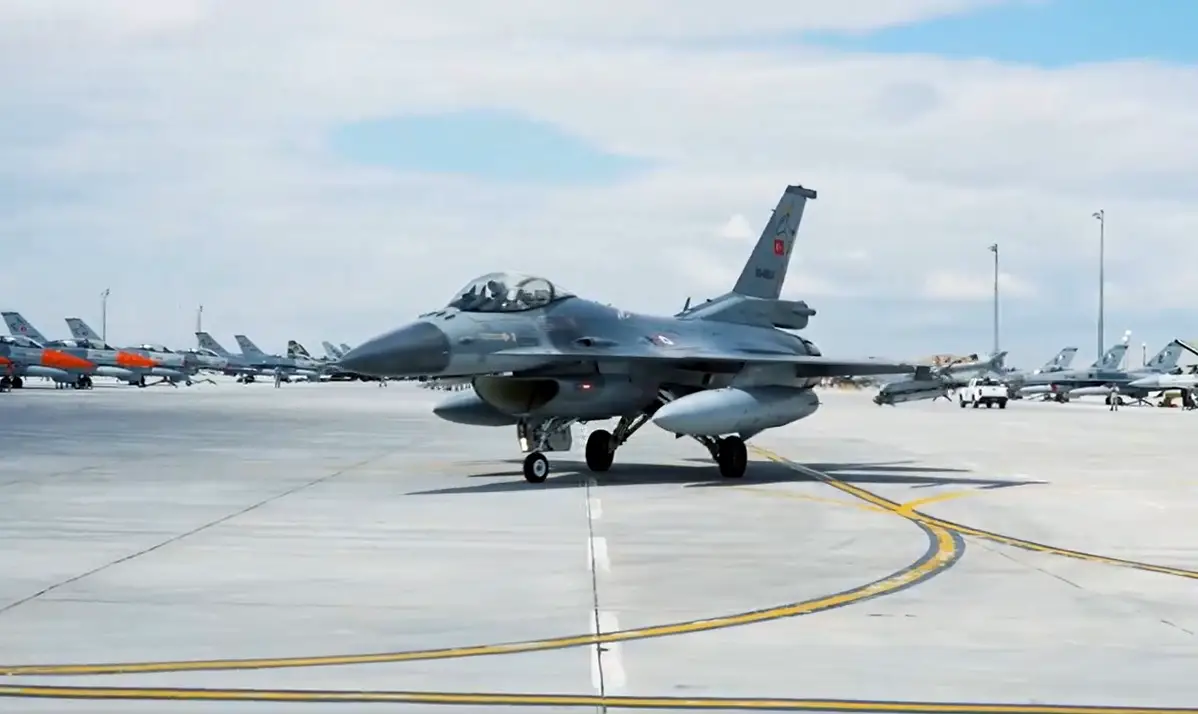Aselsan’s latest active electronically scanned array (AESA) Nose Radar has achieved a milestone by completing its inaugural flight onboard the Turkish Air Force’s (TuAF’s) Lockheed Martin F-16 Block-30 fighter jet. Named Murad, this indigenous radar system represents a leap forward in airborne surveillance and targeting technologies. Developed by Aselsan, the Murad radar boasts a versatile suite of functionalities catering to both air-to-air and air-to-ground missions. These capabilities include multitarget detection and tracking, beyond-visual-range missile guidance, high-resolution imaging, and electronic warfare capabilities.
Integral to the Özgür program aimed at modernizing Turkey’s F-16 Block-30 fleet, the Murad radar promises to elevate the aircraft’s operational effectiveness to that of a 4.5-generation platform, as emphasized by Haluk Görgün, President of the Defence Industry Agency (SSB). With its gallium nitride (GaN)-based chip technology, the Murad radar introduces cutting-edge features such as synthetic aperture radar (SAR), wideband radar spectrum monitoring, and directional electronic jamming capabilities. These advancements not only enhance situational awareness but also facilitate more precise guidance for air-launched munitions, bolstering the aircraft’s combat readiness.

The Turkish Air Force has a total of 270 F-16C/D aircraft in its inventory, all of them Block 30/40/50 models. Turkey is one of five countries to locally produce F-16s. Relations between the two NATO allies have gained significant momentum on which they can capitalise, U.S. Senator Chris Murphy said last week after meeting with Turkish President Tayyip Erdogan and Foreign Minister Hakan Fidan. The U.S. has sent Turkey draft letters of offer and acceptance regarding its request to buy Block-70 F-16 fighter jets and modernisation kits. Turkey made the request in October 2021, two years after the United States kicked Turkey out of the fifth-generation F-35 fighter jet program over its procurement of a Russian missile defence system.
Aselsan’s commitment to innovation extends beyond the F-16 platform, with plans to integrate the Murad radar onto other aircraft including the Kaan National Combat Aircraft (MMU), Hürjet light-attack aircraft, and various unmanned aerial vehicles (UAVs) such as Baykar’s Bayraktar Ak?nc? and K?z?lelma, along with Turkish Aerospace’s Anka 3. This successful debut flight of the Murad radar underscores Turkey’s growing prowess in indigenous defense technologies. As Turkey continues to invest in domestic defense capabilities, collaborations between industry leaders like Aselsan and the Turkish military are set to play a pivotal role in shaping the nation’s defense landscape for years to come.
Milli havac?l?k teknolojilerinde tarih yazmaya devam ediyoruz.??
.
?ASELSAN Milli #AESA Uçak Burun Radar?, ilk uçu?unu F-16 ÖZGÜR platformuyla gerçekle?tirdi.
.
?ASELSAN AESA Radar?; e? zamanl? hava-hava ve hava-yer görevleri, çok say?da hedef tespiti/takibi, görü? ötesi füze… pic.twitter.com/H3Xq5m9tg0— ASELSAN (@aselsan) March 26, 2024















